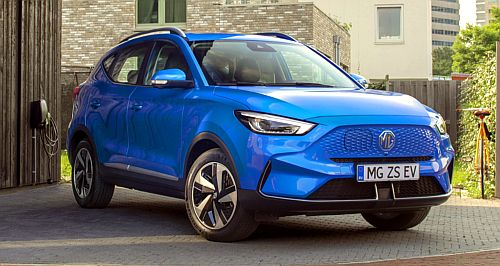Make / Model Search
News - Market Insight - Market Insight 2023Market Insight: BEVs overtake hybridsAustralian market hits turning point as soaring BEV sales steal hybrid market share17 Jul 2023 By NEIL DOWLING HYBRIDS, once considered the long-term stepping stone to battery electric vehicles (BEV), appear to be already counting their days as sales slide and BEVs grab more buyer attention. More BEVs have been sold so far this year in Australia than hybrids – a turning point in the market that is a reminder of the time in 2017 when SUVs overtook passenger car numbers. Australians bought 11,042 BEVs in the month of June (up 871.2 per cent on June 2022) and 43,092 units year-to-date (up 345.2 per cent on June 2022). By comparison, 38,313 hybrids were delivered in the first six months of this year, clipped by a fall of 28.3 per cent in passenger car hybrid sales and a rise of only 4.5 per cent in SUV hybrid sales. Plug-in hybrids (PHEVs) performed better with, their percentage up 4.2 per cent for cars and a 21.2 per cent increase for SUVs. BEVs commanded 9.3 per cent of the market (excluding heavy commercials) in June, and 10 per cent year-to-date. Pitcher Partners notes that this rising market share is driven by significant FBT savings with novated leasing. But it also comes as the statistical decline in hybrid sales was triggered by a lack of stock for the biggest hybrid seller, Toyota, and in particular attributed to hold-ups with its RAV4. Last year, hybrids comprised 13.4 per cent of passenger vehicles and now they count for 9.7 per cent. On the other side, electric vehicles were 6.2 per cent and are now a significant 14.1 per cent. SUVs were the biggest sector to showcase the trend to BEVs. In its look at the new-car market, Pitcher Partners said Toyota’s RAV4 has been supplanted as the top-selling SUV in Australia by the Tesla Model Y, with the BEV now taking the top spot. The MG ZS – which includes the electric variant – followed in second, marking the dramatic rise of Chinese-built vehicles in Australia from 9.0 per cent last year to 16.5 per cent of the market in 2023 year-to-date. For perspective, Chinese built vehicles only made up 1.7 per cent of the market back in 2019. In year-to-date data, SUVs sold were up 14.4 per cent on the same time last year with the majority being fuelled by petrol. Although once having a solid slice of the fuel-type pie, diesel versions are down 12.6 per cent on last year. Hybrid SUV sales are up 4.5 per cent; petrol sales up 11.4 per cent (driven by the new wave of small models); plug-in hybrid (PHEV) is up 21.2 per cent; and battery electric is up a whopping 784.2 per cent with 28,373 sales – 105 units higher than hybrids (28,268). The story is similar to passenger cars, although a surprise is an 18.8 per cent increase in diesel-fuelled cars driven predominantly by the people-mover segment. BEV sales among passenger cars are up 127.1 per cent for the year compared with 2022, with Tesla playing a key role here. Tesla sales of its Model 3 car are up 148.8 per cent in the six months to June compared with the same period in 2022. PHEV sales of the cas are up 4.2 per cent (although a relatively small 200 total sales) while petrol is down (7.3 per cent), as is hybrid, which lost 28.3 per cent of sales in the year thanks to the burgeoning choice in BEVs and a lack of new PHEV product. In its market overview, Pitcher Partners said sales for the month of June were up by 25.0 per cent (on June 2022). “But this does not paint the full story. As expected, demand has grown strongly for the end of the financial year,” it said. “The instant asset write-off has been pared back significantly, with most motor vehicles failing to qualify for the $20,000 or under the threshold from July 1 onwards. “We are also seeing heavy discounting from MG, as they ran a plate clearance during May and June.  |
Click to shareMarket Insight articlesResearch Market Insight Motor industry news |









Facebook Twitter Instagram